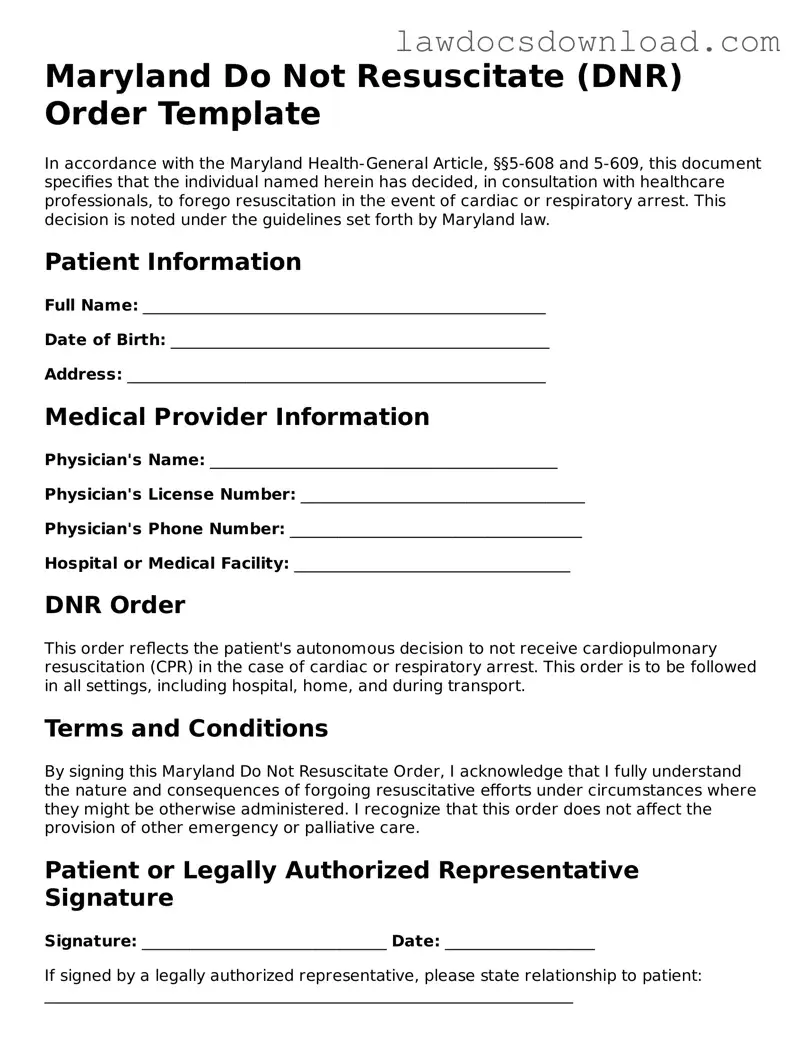Maryland Do Not Resuscitate (DNR) Order Template
In accordance with the Maryland Health-General Article, §§5-608 and 5-609, this document specifies that the individual named herein has decided, in consultation with healthcare professionals, to forego resuscitation in the event of cardiac or respiratory arrest. This decision is noted under the guidelines set forth by Maryland law.
Patient Information
Full Name: ___________________________________________________
Date of Birth: ________________________________________________
Address: _____________________________________________________
Medical Provider Information
Physician's Name: ____________________________________________
Physician's License Number: ____________________________________
Physician's Phone Number: _____________________________________
Hospital or Medical Facility: ___________________________________
DNR Order
This order reflects the patient's autonomous decision to not receive cardiopulmonary resuscitation (CPR) in the case of cardiac or respiratory arrest. This order is to be followed in all settings, including hospital, home, and during transport.
Terms and Conditions
By signing this Maryland Do Not Resuscitate Order, I acknowledge that I fully understand the nature and consequences of forgoing resuscitative efforts under circumstances where they might be otherwise administered. I recognize that this order does not affect the provision of other emergency or palliative care.
Patient or Legally Authorized Representative Signature
Signature: _______________________________ Date: ___________________
If signed by a legally authorized representative, please state relationship to patient: ___________________________________________________________________
Physician Signature
The undersigned physician hereby affirms that this order accurately reflects the patient's directive and is consistent with Maryland’s medical standards for issuing a Do Not Resuscitate Order.
Physician's Signature: _____________________________ Date: ___________________
Instructions for Revocation
A Maryland Do Not Resuscitate Order may be revoked at any time by the patient or their legally authorized representative without regard to the patient's mental state or competency, by any of the following methods:
- Informing the attending physician verbally or in writing.
- Physical destruction of the DNR order document.
- By expressing to any person the desire to revoke the order, and having that person inform the physician.
Important Notice
This document does not create a Maryland Advance Directive. It is advised that separate legal tools be used to address decisions about the use of life-sustaining procedures and the designation of a healthcare agent.
